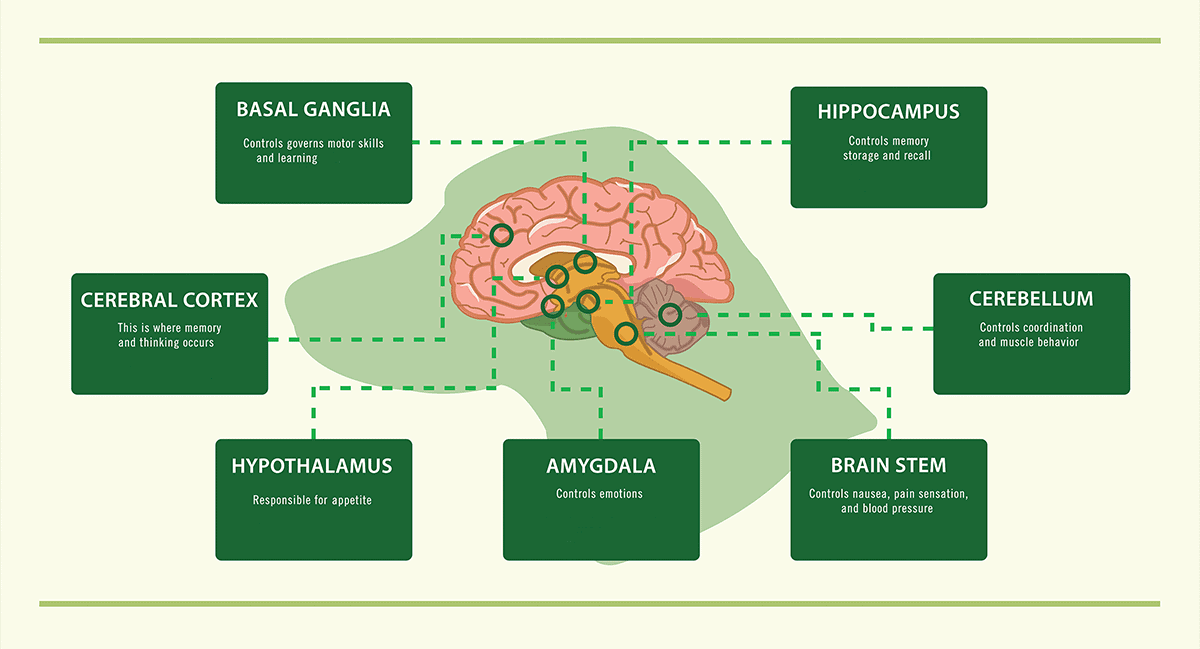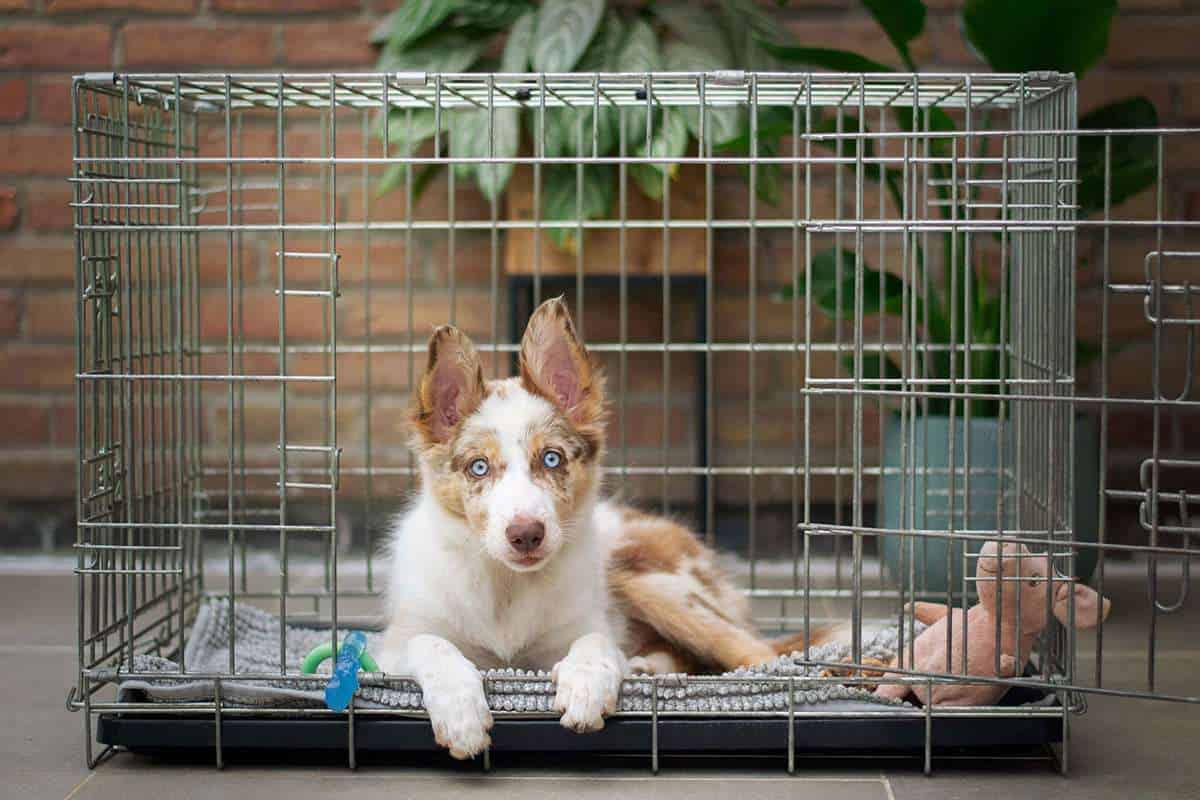As a dog owner, you may have noticed your furry friend exhibiting signs of anxiety, such as excessive barking, trembling, or destructive behaviors. Witnessing your beloved dog in a state of distress or anxiety can be heart-wrenching. To help your anxious dog, it’s essential to understand the underlying mechanisms of anxiety in the canine brain. In this blog post, we’ll delve into the science behind anxiety in dogs, explore common triggers, and discuss how this knowledge can help you better support your anxious pet.
The Canine Brain: A Brief Overview
Before diving into the specifics of anxiety, it’s helpful to understand the basics of the canine brain. The dog’s brain is divided into three main parts: the forebrain, midbrain, and hindbrain. Each of these sections plays a crucial role in processing information, controlling bodily functions, and regulating emotions and behaviors.
The Forebrain: The forebrain is responsible for higher-order cognitive functions, such as learning, memory, and decision-making. It also plays a significant role in regulating emotions, including fear and anxiety.
The Midbrain: The midbrain is involved in processing sensory information and controlling motor functions. It also plays a role in the “fight or flight” response, which is activated in response to perceived threats.
The Hindbrain: The hindbrain is responsible for controlling vital functions, such as heart rate, respiration, and digestion. It also plays a role in regulating sleep and wakefulness.
Understanding Anxiety in the Canine Brain
Anxiety is a normal emotion experienced by all animals, including dogs, as a response to potential threats or challenges. It is an essential part of the survival mechanism, as it helps animals stay alert and respond to danger effectively. However, when anxiety becomes chronic or excessive, it can have a detrimental impact on your dog’s well-being.
In the canine brain, anxiety is primarily regulated by a complex interplay of neurotransmitters, hormones, and neural circuits. Key components involved in anxiety regulation include:
The Amygdala: This almond-shaped structure, located in the forebrain, plays a crucial role in processing emotions, particularly fear and anxiety. When a dog perceives a potential threat, the amygdala sends signals to other brain regions, initiating the “fight or flight” response.
The Hypothalamus: The hypothalamus, also located in the forebrain, helps regulate the body’s response to stress. In response to signals from the amygdala, the hypothalamus releases stress hormones, such as cortisol, which prepare the body to react to the perceived threat.
The Prefrontal Cortex: This region of the forebrain is responsible for decision-making, impulse control, and emotional regulation. It plays a vital role in managing anxiety by evaluating potential threats and inhibiting the “fight or flight” response when it’s not necessary.
Neurotransmitters: Chemical messengers, such as serotonin, dopamine, and norepinephrine, play a crucial role in regulating anxiety in the canine brain. Imbalances in these neurotransmitters can contribute to anxiety disorders in dogs.
Common Triggers of Anxiety in Dogs
Various factors can trigger anxiety in dogs, including genetic predispositions, early life experiences, and environmental stressors. Common sources of anxiety in dogs include:
Separation Anxiety: Many dogs become anxious when separated from their owners, leading to behaviors such as excessive barking, destructive chewing, or house soiling.
Noise Phobia: Some dogs are highly sensitive to loud noises, such as thunderstorms or fireworks, and may display signs of anxiety, including trembling, panting, or attempting to hide.
Social Anxiety: Some dogs may become anxious in social situations, such as meeting new people or encountering unfamiliar dogs. This can result in fearful or aggressive behaviors, such as growling, snapping, or cowering.
Environmental Stressors: Changes in a dog’s environment, such as moving to a new home, the addition of a new family member, or a change in routine, can trigger anxiety.
Traumatic Experiences: Dogs that have experienced trauma, such as abuse or a natural disaster, may develop anxiety related to the event or certain stimuli associated with the trauma.
Medical Issues: Some medical conditions, such as thyroid disorders or chronic pain, can contribute to anxiety in dogs.
How Understanding Anxiety Can Help Your Dog
By understanding the canine brain’s inner workings and the factors that contribute to anxiety, you can better support your anxious dog. Here are some ways you can use this knowledge to help your dog:
Identify Triggers: Pay close attention to your dog’s behavior and note any situations or stimuli that seem to cause anxiety. By identifying these triggers, you can develop strategies to help your dog cope more effectively.
Provide a Safe Space: Ensure your dog has a safe, comfortable space where they can retreat when feeling anxious. This could be a crate, a separate room, or a designated area within your living space.
Use Desensitization and Counter-Conditioning: These are behavioral modification techniques that involve gradually exposing your dog to the anxiety-provoking stimulus while simultaneously associating the stimulus with positive experiences. This can help your dog develop a more positive emotional response to the trigger.
Implement a Consistent Routine: Dogs thrive on consistency and predictability. Establishing a consistent daily routine, including regular feeding times, walks, and playtime, can help reduce anxiety.
Provide Mental Stimulation: Engaging your dog in mental stimulation activities, such as puzzle toys or scent work, can help alleviate anxiety by redirecting their focus and energy.
Practice Positive Reinforcement: Reward your dog for displaying calm, relaxed behavior, especially in situations that may provoke anxiety. This helps reinforce the desired behavior and builds your dog’s confidence.
Consult with a Professional: If your dog’s anxiety is severe or you’re unsure how to help them, consider seeking the assistance of a certified dog behaviorist or veterinarian. They can provide tailored guidance and recommendations based on your dog’s specific needs.
Conclusion
Understanding the canine brain and the mechanisms behind anxiety can empower you to better support your anxious dog. By identifying triggers, implementing a consistent routine, and using behavioral modification techniques, you can help your dog develop coping strategies and overcome anxiety-related challenges. Remember to be patient and compassionate, as change takes time and effort. With your support, your dog can learn to navigate the world with greater confidence and ease.
Reference:




Leave a Reply